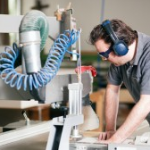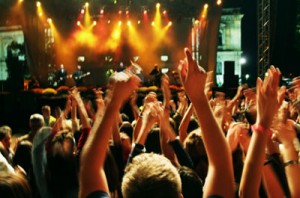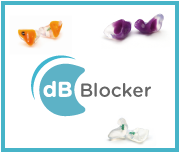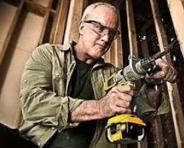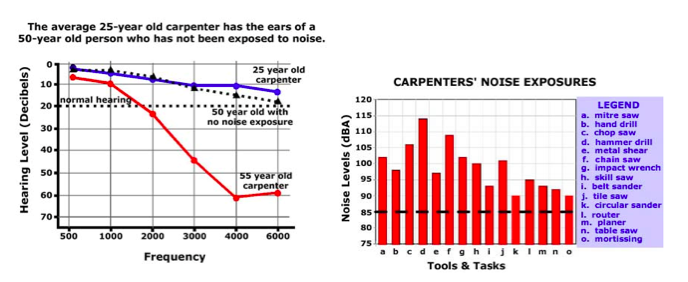Custom Protect Ear has been providing custom hearing devices for over 25 years. The custom molded ear products sometimes called Personalized Hearing Protection, are just as, if not more, effective for the prevention of noise-induced hearing loss as are disposable earplugs.
What is a custom-moulded earplug?
A custom-moulded earplug is a laboratory-made earplug made from moulds taken by trained experienced impression takers. In North America the experienced impression takers may be audiologists, licensed hearing aid dispensers, or impression takers well trained by the manufacture. Most often, these are made of acrylic or soft silicone that can fit the ear and the ear canal tightly. The advantage of the softer earplugs is they change shape slightly as the wearer’s ear canal changes shape when talking or chewing, thereby continuing to seal during those activities.This deems to have great benefits when working in high activity – noise induced environments.
The custom-moulded earplugs are typically delivered in a protective storage/carrying pouch and will be accompanied with a tube of lubricant (most often petroleum jelly).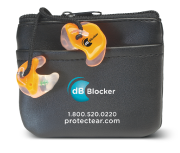
The lubricant is applied to the earplugs during their initial use/break in period. The lubricant makes the earplugs easier to insert and also softens the interface of the earplug and ear improving comfort.
After about ten or so uses with the lubricant applications can stop as the silicon should have absorbed enough material to be easily inserted for the life of the earplug.
What is a disposable earplug?
So-called “foam” and pre-moulded earplugs are designed to be used for one time or in some cases, a few times. Exceptions to this restriction are those very expensive earplugs such as the Hi-Fi or military earplug that can be cleaned for repeated use.
Until the 1970’s the most common earplug was the V51-R made from soft silicone, a single-flange earplug developed for the military that came in five sizes. Because it didn’t work well, it required precise fitting. Eventually it was discontinued due to repeated pressures from the scientists and practitioners in the hearing health community. Later other earplugs were developed with multiple flanges. 
When is a “custom-moulded” earplug NOT “custom”, but really a long-term use disposable earplug?
Simply put: Earplugs directly made from the impression materials, which can be considered as fitter-formed or mould-in-place, are not custom-moulded earplugs (Lake, 2012). This is true for a variety of reasons.
First and foremost is the impression material. Impression materials now used for laboratory-made custom-moulded earplugs are designed for the purpose of taking the impression and holding shape whist in transit to and whilst being processed to make moulds by the laboratory. Fitter-formed impression material is intended to become the final product and so it “cures” while setting during the impression process. In order for this to work, the fitter-formed impression material is more viscous than impression materials used for laboratory-made custom-moulded earplugs. As such, the likelihood of an impression free from flaws and with a faithful rendering of the shape of the concha and helix as well as the pinna and ear canal is small.
The impression for the laboratory-made custom-moulded earplug is also usually a silicone product made from mixing a base putty with a liquid or gel activator. Some laboratories use two-part silicone materials that combine catalyst and silicone in 50/50 proportion. The result is far less viscous material than used for the fitter-formed products; its viscosity is such that it may be put into a syringe for injecting into the ear canal and concha and helix of the pinna.
Second is the impression process. Fitter-formed products use putty created from combining a base putty with a liquid activator and then folding them until blended. That putty begins to cure immediately but has less-than a three-minute time window when it will be malleable. The putty is rolled into a cylinder and the pushed down the ear canal and padded into the concha and helix of the pinna. Once it seems to have cured, it is removed from the ear and trimmed. Handles or the ends of cords may have been attached after the insertion but before the impression cured.
For a custom-moulded laboratory-made earplug, following otoscopy, a cotton or foam dam is placed into the ear canal with its placement confirmed by otoscopy so that there is no chance for the impression material to travel deeply enough to make contact with the eardrum. As well, if the ear canal has excessive cerumin, the ear canal may be cleaned by the audiologist taking the impression or the person may be referred to his or her own physician to have the ear canals evaluated and cleaned – the exact procedure depends on locality and regulatory requirements.
Then, the impression material is injected to fill the entire ear canal between the dam and the opening of the canal behind the tragus and finally the bowl of the concha and the helix are filled. There is a debate over whether the mouth should be closed, opened, or slightly opened during the time it takes for the impression material to set. The mouth slightly open (relaxed or with a bite block of 20 mm or so that) has been shown to provide better bass than mouth closed when the earplug is modified to be used with insert earphones. There have been no published studies of the differences in noise reduction between laboratory-made custom-moulded earplugs made from mouth-relaxed versus mouth-closed impressions.
Once the impression material has set, it is carefully removed from the ear, inspected to make sure there are no creases, ridges, or other malformations, and put into a package to be sent to the laboratory. There is no trimming done by the impression taker.
The experience and training of the impression taker is also very important. Depending upon locality and professional licensing regulations, the impression taker may have been trained by the laboratory making the custom-moulded earplugs, or have academic or clinical training in impression taking. In any case, once the impression reaches the laboratory, its staff can determine the quality of the impression and may ask for a second impression if the first has flaws that the laboratory can’t adjust.
Already in the hands of some audiologists are laser scanners that can make a digital image of the impression, and the image goes to the laboratory for further processing to make the mould from which the earplug is made. As the image is stored digitally, so long as the file is not corrupted, it is possible to make as many earplugs from one impression as necessary for as long as is necessary. Soon to come will be digital imaging of the ear canal and pinna, so that there will be no use of impression material, as the image of the ear will be sent to the laboratory to be process into an earplug. Either of these techniques should remove impression making from the hands of amateurs and DIY’ers.
Learn more about the advantages of Custom Molded Earplugs “Download the Whitepaper”.
What dB Blocker wearers are saying.
“I would like to say thanks I have had my db blocker vented convertible ear plugs for the past 7 years I would like to say that you guys make the best ear plugs I have come across I am a welder I have bin in the industry for the past 10 years. That are worth every penny great quality. Thanks you so much I will be going to my boss’s at my work (national steel car) to get all my brothers a pair of Db blockers.”
~ Babb Matt – National Steel Car.
